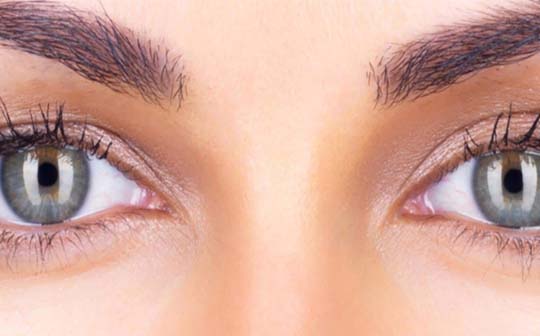While there are many good reasons why people opt for laser eye surgery, some still choose to stick with a lifetime of wearing contact lenses or glasses after weighing up the relative costs.
However, when it comes to analysing cost as a factor, there’s a common tendency to consider only short-term costs. That’s perfectly understandable, after all, it is indeed more expensive to have laser eye surgery than it is to buy a pair of cheap glasses – at least temporarily!
In most cases, however, the seemingly cheaper fix can lead to more complex, long-term expenses.
Accounting for only the short-term expenses isn’t especially helpful or enlightening when it comes to making a decision that will, after all, stay with you for far longer.
Laser Eye Surgery: The Pros And Cons
A key advantage of laser eye surgery is its long-lasting impact on vision. Unlike glasses or contact lenses, which require continuous replacements, laser eye surgery offers a longer lasting solution.
While the total cost of laser eye surgery is higher upfront, it typically proves more economical over time, given the recurring costs of corrective lenses or glasses. Most patients find that their investment pays off within a decade, with many enjoying 20/20 vision or better following the procedure.
Although times can vary depending on the specific surgical procedure, laser eye surgery is quick, typically taking around 15-25 minutes for both eyes, with a recovery period that’s often minimal. Most patients notice an immediate improvement in their vision, with their eyes healing fully over the coming days. However, some individuals may experience side effects such as dry eyes or halos around lights, although these are usually short-term and manageable.
Want To Find Out If You’re Suitable?
If you’re wondering whether laser eye treatment is the right choice for you, there are some key things to consider…
An often overlooked factor with laser eye surgery is the impact it can have on your lifestyle. The freedom from searching for glasses in the morning or dealing with the maintenance of contact lenses is invaluable, providing greater convenience for those who live active, on-the-go lives or enjoy contact sports.
However, laser eye surgery may not be suitable for everyone, and individuals with certain eye health conditions or particularly complex prescriptions may not be suitable. In those cases, alternative vision correction methods such as refractive lens exchange or implantable contact lenses may be more appropriate.
Although the upfront cost and potential side effects must be considered, the long-term convenience, financial savings, and enhanced quality of life make laser eye surgery a highly appealing option for many people.
Glasses: The Pros And Cons
The full over-the-counter price of a new pair of glasses isn’t always immediately apparent when browsing a retail website or window display.
In most cases, as the buyer, you’ll need to go through all the various steps involved in purchasing a new pair before the full cost is revealed. This typically includes:
- Selecting a frame design that appeals to you (often from a relatively limited range in stock, depending on how you choose to shop)
- Selecting a lens type and grade according to your prescription and/or the activities you’ll be using your glasses for
- Factoring in any additional costs for further options or offers, such as bundle deals on cases, cleaning solutions, lens upgrades and more

Once all these steps are accounted for, the final bill for a complete package can far exceed the stated baseline price. In retail environments, the advertised price often refers only to the frames themselves – and, in most cases, only to the most basic option available.
- For fashionable, lightweight or rimless frames from a recognised design brand, it’s not uncommon to pay anywhere from £100-£150 before any other key features are even considered.
- Your lenses themselves might easily add another £80-£100 to the total price, depending on how complex the prescription is
- Further extras, like scratch resistance or UV filters, can quickly ratchet the price up by nearly as much again
When all these options are bundled together, it’s not unusual for a reasonably stylish pair of glasses, perhaps with one or two enhancements for comfort or durability, to set you back £200+ on the high street.
On top of that, you’ll certainly be wanting a backup pair as well – especially if you need your glasses to drive to and from work, play sports, watch movies, read, or perform any number of basic daily tasks properly.
While you’re likely to cut a few more corners with your ‘spare pair’ to bring costs down a bit, it’s likely you’ll only want to use them as a temporary fix while your favourites are repaired or replaced (at further cost, naturally).
Super-budget replacements from a one-size-fits-all supermarket shelf might be suitable as a very short-term option if you’re lucky. Being uniform in design, they’re unlikely to suit those with different prescriptions for each eye.
All things considered, you might easily end up forking out £300-£500 every couple of years (if you’re very lucky and/or careful!) for your glasses. That’s not an insignificant cost: it can easily average out to nearly 50p per day, every day, in perpetuity.
And, while that may not sound horrendous on a week-to-week basis, the long-term figures are actually quite grim. Over the span of a single decade, the price of corrective eyewear can quickly add up to thousands of pounds.

Contact Lenses: The Pros And Cons
Contact lenses, of course, involve an entirely separate set of problems and expenses, with individual outgoings typically lower but much more frequent.
Given how many factors influence an individual’s contact lenses budget, it can be hard to quantify the yearly cost as any sort of accurate ‘average’; most baseline estimates tend to come in at anywhere from £300-£500 a year. Within that vague ballpark, individual buyers will need to account for a wide range of variables including:
- Lens type
- Your prescription (and the way it changes over time)
- Favoured/convenient retailers
- Frequency of replacement
- Bulk purchase vs. on-demand service
- Optional extras (colour tints, special effects)
- Hygiene solutions and storage costs (if not using disposables)
- Potentially increased expense from general eye-care (contact lenses worsen the average risk of incidental eye infection or damage)
Contact lenses also come with their own extensive range of alternative options and modifications, many of which can raise their cost significantly above baseline prices. These might include:
- Lenses for age-related presbyopia (bifocals)
- Coloured or tinted models
- Daily vs. weekly disposables
- Extended wear (30-day) variants
- Corrective lenses for astigmatism
- Gas-permeable lenses for long-term wear
What To Consider When Choosing Glasses Or Contact Lenses
Be aware of any grey areas! Not all glasses are made equal, obviously. Quality of manufacture will vary enormously across the entire price and branding range, which can have a very noticeable impact on durability, comfort…and yes, price.
In terms of warranties, all but the most budget frames should ideally be guaranteed against manufacturing defects for at least 90 days after purchase.
Some will even offer a full year’s cover as standard, although it can be somewhat difficult to claim against such a warranty when ‘natural wear and tear’ so quickly becomes an issue with items you use many times every day.
You’ll also want to check that your after-sales vision care policy covers more than just the cost of a budget replacement if you’re paying top whack for a designer brand. Separate warranties on some of those expensive ‘extras’ can be equally shrouded in caveats.
And, speaking of extras, it’s not unheard of for add-ons to interfere with one another. Examples such as scratch-free coatings being overlaid with UV or anti-glare filters that aren’t scratch-proof – and thus render the initial protection useless – do crop up from time to time.
In short, the savvy glasses-buyer will need to be aware of precisely what they’re getting for their considerable recurrent investments.
And finally, if you plan to switch between wearing glasses and wearing contacts, be prepared to end up paying considerably more each year than someone who limits themselves to just one or the other.

Lifestyle & Convenience
While glasses or contact lenses can seem a straightforward solution to a complex problem on the surface, anyone who regularly wears either will know just how inconvenient they can prove in many everyday situations.
Aside from just the monetary cost of corrective eyewear – including updating prescriptions, replacing lost or broken lenses, acquiring multiple frame and lens types for different activities, maintaining numerous robust storage options, and keeping a well-stocked supply of hygiene products on hand – glasses and contact lenses each involve a considerable cost in terms of day-to-day time and convenience.
In fact, the potential problems with corrective eyewear often begin right from the very first moment you wake up. Depending on your prescription, it may be challenging to see while searching for your glasses on the bedside table for your lenses first thing in the morning.
Of course, if you’ve accidentally left them anywhere else before turning in, then locating them becomes an even bigger chore! And glasses are uncannily easy to lose, as any regular wearer will attest.
In fact, 2016 research by a UK name tag manufacturer found that glasses were the fourth most commonly lost item by Britain’s adults (after keys, phones and pens).
In short, you can lose glasses more or less anywhere – and if you do need to wear them, then of course taking them off for any reason makes misplacing them even easier.
You may also find yourself having to repeatedly swap between various pairs of glasses for different types of activity: a pair that’s suitable for a quick game of tennis, for instance, most likely won’t be what you’d choose to wear later that evening for dinner or a movie.
Needing to keep numerous pairs close at hand for all manner of scenarios can quickly become a real annoyance, not to mention increasing the risk of damage or loss considerably. However, it’s not nearly as irritating as not having the right pair available for the situation.
Storage & Damage
Lack of convenience can be a pain, certainly – but it can also become expensive, especially when we account for any lost time or productivity due to recurrent common issues with lost, broken or defective eyewear:
- Needing to fix a pair of glasses or replace corrective lenses in a hurry can be an extremely costly affair, and in some scenarios it may not be possible at all: certainly something to consider when taking a trip, particularly if you’re heading off the beaten track
- In some cases, lack of an appropriate and readily available solution to a problem can mean having to delay – or worse, simply miss out on – a particular activity
The cost of appropriate storage for your glasses and contact lenses isn’t usually very high – although you can certainly shell out considerable amounts for designer cases and lanyards – but the cost of failing to provide it can quickly spiral.
Modern glasses tend to be reasonably flexible and robust for their size, but they’re also engineered to be as lightweight as possible, and that certainly brings with it some major durability drawbacks.
The most common causes of damaged or broken glasses are all fairly innocuous, and can happen almost anywhere:
- Being left on a desk, table or worktop where they can be knocked off
- Being sat on, either in a pocket or by another person
- Falling from the wearer’s face or head during sudden movement
- Scratch damage from other items in bags, pockets and storage cubbies
- Sprained frames or damaged screws due to improper ‘one-handed’ removal
Most professional estimates agree that, due to the long-lasting improvements it offers, laser eye surgery proves a more economical solution than most vision-corrective eyewear options within 10-15 years of having the procedure done.
When you also factor in the additional time-saving and convenience of not having to bother with cumbersome, damage-prone, easy-to-lose wearable options, the total cost-benefit analysis tends to lean heavily in favour of laser eye surgery over time
How Does Laser Eye Surgery Compare To Contact Lenses Or Glasses Over 30 Years?
When considering the long-term costs of vision correction options, laser eye surgery often emerges as the most cost-effective solution.
For glasses, spending an average of £300 per year would add up to £9,000 over a 30 year period. Contact lenses are slightly cheaper, we’ve assumed a monthly spend of £20, or £240 annually, which totals £7,200 over the same period.
In contrast LASIK, one of the most popular laser eye surgery treatments, involves a one-time investment of approximately £4,400, with no recurring costs thereafter – outside of your regular annual checkups.
While the upfront cost of LASIK eye surgery initially seems high, it works out significantly cheaper over time. The cumulative costs of regularly replacing glasses or contact lenses can far exceed the price of a one-time LASIK procedure, making laser eye surgery a smarter financial choice in the long run.
| Annual Cost | One Time Investment | Total Cost Over A 30 Year Period | |
| Glasses | £300 | £0 | £9,000 |
| Contact Lenses | £240 | £0 | £7,200 |
| LASIK Surgery | £0 | £4,400 | £4,400 |
Conclusion
Choosing the right vision correction option is about more than just cost—it’s about quality of life.
While choosing to wear glasses or contacts may seem like the simpler choice in the short term, the long-term expenses and inconveniences can quickly add up. Laser eye surgery, on the other hand, provides a long-term solution, saving you both time and money over the years.
With minimal recovery time and the freedom from daily eyewear hassles, laser refractive surgery is an excellent option for those looking to improve their vision and lifestyle.
If you’re ready to take the next step towards clearer vision, why not book a consultation with us?
Our experienced team will discuss your current prescription, answer your questions about laser eye surgery, and help you find the perfect solution for your unique needs.
Take the first step toward a life free from glasses and contact lenses—schedule your consultation today!

